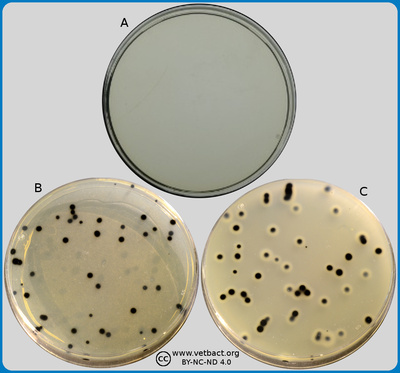Tryptose Sulfite Cycloserine agarThe figure shows three TSC agar plates, where no bacteria have been cultivated on plate A. Clostridium perfringens has been cultivated on plates B and C. Plate C contains lecithin, but not plate B. Note the precipitation zone of diglycerides around the colonies on plate C.- Click on the image to enlarge it. Image: Ingrid Hansson (SLU), Lise-Lotte Fernström (SLU) & Karl-Erik Johansson (SLU).
Applications:Tryptose Sulfite Cycloserine agar (TSC agar) is used for isolation and enumeration of both vegetative cells and spores of Clostridium perfringens in food and clinical samples. The medium contains:
The final pH of the medium should be 7.6. Other comments:Hydrogen sulfide (H2S) positive bacteria (as e.g. C. perfringens) form black colonies on TSC agar. If the TSC agar contains lecithin, a precipitation zone will be formed around colonies, which produce lecithinase. Updated: 2019-06-11. |

